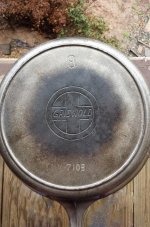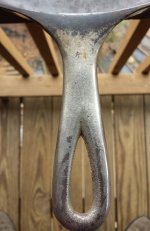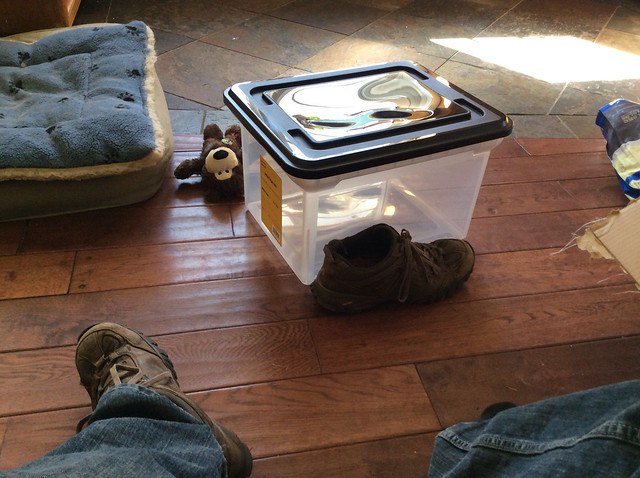A little confusion here and I was hoping for some clarification.
Recently I acquired a Regular Skillet, No 9, p/n 710B. On page 21 of the blue book, I found the skillet but the one I have is not iron, it is nickel I think. There are a few spots on the handle that have small chips on it. It looks like the plating has chipped. Any feedback would be really appreciated.
I've attached some pictures of the pan.
Once I find out what it is, then I'll need to figure out how to clean it. Any thoughts?
Recently I acquired a Regular Skillet, No 9, p/n 710B. On page 21 of the blue book, I found the skillet but the one I have is not iron, it is nickel I think. There are a few spots on the handle that have small chips on it. It looks like the plating has chipped. Any feedback would be really appreciated.
I've attached some pictures of the pan.
Once I find out what it is, then I'll need to figure out how to clean it. Any thoughts?




